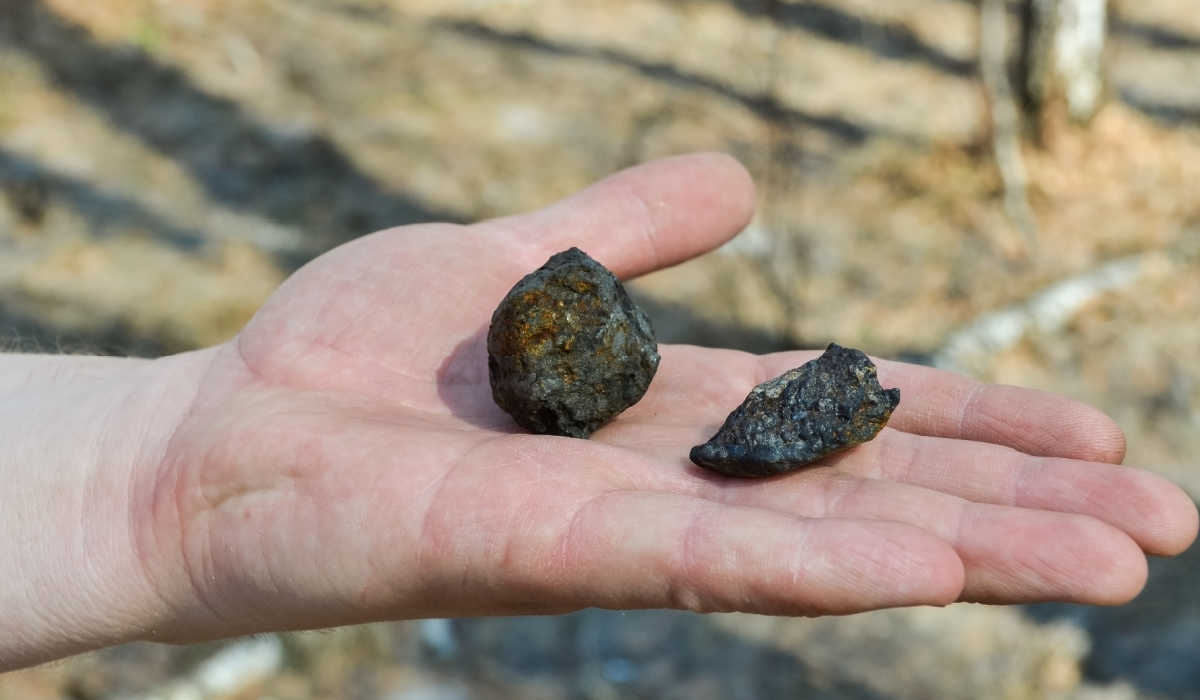As a meteor enthusiast, I couldn’t help but be excited when I found out a meteorite had streaked across the Arkansas sky recently. As it turns out, the fireball meteor was witnessed by residents across nine states on a Monday night, making it a significant event for both locals and meteorite hunters alike. Arkansas has been known for its meteorites, with a variety of observed and unobserved falls contributing to the state’s history and culture.
In fact, three types of meteorites have been found in Arkansas: stony meteorites, iron meteorites, and stony-iron meteorites. Each of these classifications has its own specific characteristics and significance, further enriching the field of study for meteorite enthusiasts in our region. One of the most famous meteorite events in Arkansas history was the Paragould Meteorite, which fell in 1930, and is considered the largest meteorite ever to be recovered in the state.
With this latest meteor event, Arkansas continues to play an important role in meteorite research. Who knows what new discoveries this fireball meteor may bring? It is fascinating to live in a region with such a rich and storied relationship with these celestial occurrences. As I continue to learn more about meteorites and observe the night sky, I can’t wait to see what future events Arkansas has in store for us meteor enthusiasts.
Arkansas Meteorite History
Paragould Meteorite
In the early hours of February 17, 1930, a remarkable event occurred in Paragould, Arkansas. A meteor broke into pieces and caused several sonic booms before finally striking two fields southwest of the town. This incident, known as the Paragould Meteorite, marks an important moment in Arkansas meteorite history.
The fireball created by the meteor was so bright that it was visible not only in Paragould, but also in neighboring states like Illinois, Indiana, Missouri, and Kansas. The meteorite, which broke into multiple fragments upon impact, remains a historical treasure to this day and still generates interest among researchers and meteorite enthusiasts.
I find it fascinating that throughout the history of Arkansas, 15 meteorites have been discovered, with the Paragould Meteorite being one of the six documented observed falls. Meteorites found in the state can be categorized into three major types: chondrites, stony-irons, and irons.
The largest fragment of the Paragould Meteorite, weighing over 800 pounds, was eventually housed in the U.S. National Museum. In May 2023, 93 years after the event, the meteorite found its way back to Northeast Arkansas and now resides in the Greene County Museum. This historic event not only serves as an important milestone in Arkansas meteorite history but also highlights the enduring relevance and significance of meteorite falls in our understanding of the Earth and space.
Understanding Meteorites
Meteorites are fascinating objects that originate from space and fall to Earth. As a person who is constantly learning about the various aspects of meteorites, I’d like to share some information about their types and characteristics.
Meteorite Types
There are three major types of meteorites: chondrites, stony-irons, and irons. Let’s look at each type in more detail.
Chondrites are the most common type of meteorite. They are formed from dust and small grains in the solar system that have never melted. Chondrites get their name from the small, round particles called chondrules that they contain. These chondrules are composed of silicate minerals and provide valuable information about the early history of our solar system.
Stony-irons are a group of meteorites that are made up of both rocky and metallic material. This mixture of materials makes them particularly interesting to study, as they offer insight into the different processes that occur within asteroids.
Irons are meteorites that consist almost entirely of metallic iron and nickel. They are incredibly dense and heavy compared to other meteorite types. Iron meteorites are thought to come from the cores of larger planetary bodies, such as the Moon, Mars, or even Earth’s own core.
When it comes to Arkansas meteorites, all the meteorites found in this area can be grouped into these three major types. Knowing more about meteorite types helps us understand the diverse composition and formation of these celestial objects. They give us a unique perspective on the early history of the solar system and the processes that shaped it.
Meteorite Impact
Sonic Boom Phenomena
I have observed that sonic booms are an integral part of meteorite impacts. When a meteorite enters the Earth’s atmosphere, it moves at extremely high speeds, which generates intense friction and heat. This friction also causes a bright fireball, typically accompanied by a vibrant greenish color, as seen in the Paragould Meteorite event.
Sonic booms are caused by the rapid expansion of air around the meteorite, creating shockwaves. These shockwaves travel through the atmosphere, resulting in the loud booming sound commonly associated with meteorite impacts. In the Paragould Meteorite event, three sonic booms were heard, suggesting that the meteorite broke into three separate pieces before striking the ground.
It is not uncommon for meteorites to fragment when entering the Earth’s atmosphere. The rapid deceleration and intense heat cause the meteorite’s outer layers to vaporize, which, in turn, can cause the meteorite to break apart. The fragments, or meteorites, often land over a wide area, as was the case with the Paragould Meteorite.
Detection of meteorite impacts can be challenging; especially when dealing with smaller fragments. Radars and other detection systems can help track larger meteorites and their trajectories; however, smaller fragments are often more difficult to detect. Despite this challenge, witnessing meteorite impacts can be an awe-inspiring experience, comparable to seeing a brilliant lightning strike.
In conclusion, the Sonic Boom Phenomena provides valuable insight into meteorite impacts, allowing us to better understand these powerful cosmic events. The combination of high-speed movement, atmospheric friction, and fragmentation results in the creation of distinct sonic booms and vivid fireballs, offering both scientific knowledge and visual wonder to those who witness these events.
Viewing a Meteorite Event
I recently had the opportunity to witness a stunning meteorite event in the Arkansas sky. The sight of fireballs streaking through the sky was truly breathtaking, and I couldn’t help but share my experience with others. As a night sky enthusiast, I have always been fascinated by shooting stars and other celestial events. This recent meteorite event was definitely an awe-inspiring moment for skywatchers like me in Arkansas.
The fiery spectacle of this meteorite was captured on video by several skywatchers and surveillance cameras in the region. Having seen it myself, I can assure you that it was a brilliant green flash as the meteor exploded across the Arkansas sky. According to reports, the American Meteor Society has received 98 reports of this meteorite event from residents across several states.
I couldn’t help but wonder about the science behind this celestial phenomenon. Meteors like this are actually small rocky or metallic objects moving at high speeds through space. When they come into contact with Earth’s atmosphere, they burn up, creating the beautiful streaks of light known as shooting stars or fireballs. The green hue of the Arkansas meteor is likely due to the presence of various elements, such as copper and magnesium, interacting with the Earth’s atmosphere and combusting.
While experiencing these meteorites firsthand is a rare and extraordinary event, there are several meteor showers that happen throughout the year, giving skywatchers and stargazing enthusiasts like myself ample opportunities to catch a glimpse of celestial fireballs. Of course, it’s essential to have clear viewing conditions, devoid of light pollution, to fully appreciate these incredible shows.
I hope that sharing my experience with this Arkansas meteorite event has piqued your interest in celestial phenomena and inspired you to keep an eye out for future meteor showers and other night sky wonders. It’s indeed an unforgettable experience that shouldn’t be missed by anyone who appreciates the beauty of our universe.
Arkansas Meteorite Studies
Notable Researches
As a meteorite enthusiast and researcher, I find the studies conducted at the University of Arkansas to be of great interest. The university’s researchers have significantly contributed to our understanding of meteorites found in Arkansas, such as the well-known Paragould meteorite.
One notable researcher is Derek Sears, who authored a book titled Thunderstones, which provides an introduction to meteorite studies with a focus on those found in Arkansas. The University of Arkansas Press published this important resource in 1988. His work has served as an essential foundation for subsequent research in the field of meteoritics.
In collaboration with other institutions like NASA, the University of Arkansas has been conducting studies on the chemical and mineralogical composition of meteorites. This research not only furthers our understanding of these extraterrestrial rocks but also helps us to learn about the origins of our solar system.
Part of my research involves staying updated with the latest developments in meteorite studies, and I frequently use sources like Meteoritical Society, which provides valuable information on meteorite-related research and activities worldwide. Additionally, I follow their Twitter account to get the most recent news and updates.
In summary, studying Arkansas meteorites has been an engaging journey for me. Through my research, I have become knowledgeable about the University of Arkansas’ significant contributions to the field, their collaboration with NASA, and the esteemed work of researchers like Derek Sears. I am eager to explore and learn even more about these fascinating rocks and the insights they provide about our solar system.
Significance of The Arkansas Meteorite
As someone deeply interested in meteorites, I’ve come across fascinating research and findings on the Arkansas Meteorite. This remarkable meteorite holds historical and scientific importance, as it is one of the largest meteorites to fall on Earth, specifically in the Northeast part of Arkansas.
When it comes to meteorites in general, they are fragments of rock or metal that fall from space, most of them originating from the asteroid belt between Mars and Jupiter. The orbits of these objects occasionally cross Earth’s orbit, making them crash into our planet. The Arkansas Meteorite is one such extraterrestrial chunk that made its way to Earth.
The meteorite came down near the Finch Baptist Church in the south of Paragould, Arkansas on February 17, 1930. As it descended, it illuminated the sky like a brilliant bolide, catching the attention of locals. Weighing at around 800 pounds, it shattered into two large fragments upon impact. The meteorite’s fall was witnessed through a vast region, extending from Mississippi, through the Midwest, and as far as St. Louis and Indiana.
This meteorite’s significance extends beyond its size and the spectacle of its arrival. Studies have shown elements and isotopic compositions of such meteorites offer a glimpse into the origins of our solar system and the material that formed the Earth. By examining the chemical and compositional makeup of meteorites like the Arkansas Meteorite, I believe we can better understand our own planet’s history and, possibly, the formation of other celestial bodies in our solar system.
Now, the Arkansas Meteorite holds a special place in the local heritage. After being stored in several institutions for decades, recently, the Paragould Meteorite has found its way back to its home in Northeast Arkansas, serving as a symbol of the extraordinary relationship our region has with the universe above.
As a meteorite enthusiast, I am excited by what the Arkansas Meteorite represents – a connection not only to our astronomical history but to the broader tapestry of human experience and the mysteries of outer space that continue to spark our curiosity and drive scientific research.







